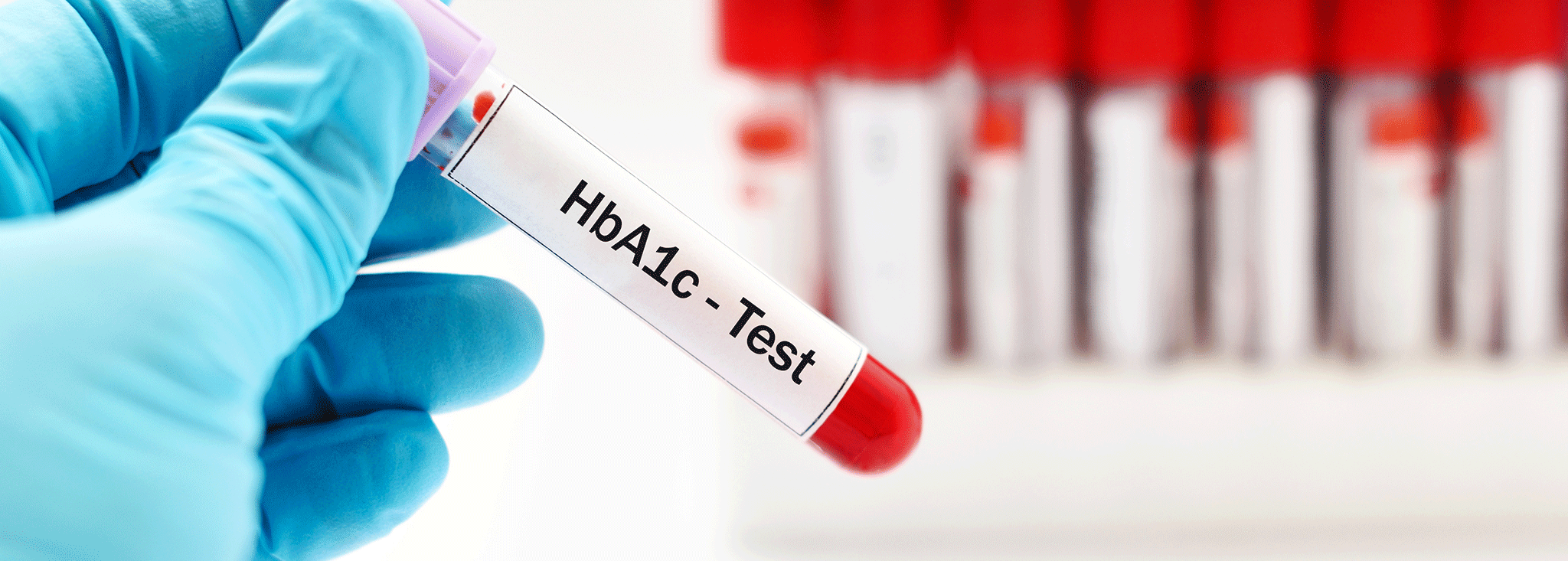Understanding Your A1C
The A1C is a blood test that helps determine how your diabetes management plan is working. It’s done every two to three months to find out what your average blood sugar has been. (You may also hear this test called glycosylated hemoglobin, glycohemoglobin, hemoglobin A1C and HbA1c.) A1C is the most common name for it though.
How the test works
Essentially, the test can tell how much sugar is in the bloodstream by looking for proteins (hemoglobins). When glucose (sugar) enters the blood, it binds to the protein in the red blood cells. This binding creates “glycated hemoglobin”. The more sugar in the blood, the more glycated hemoglobin.
It’s important to test your blood sugar levels (BGLs) throughout the day; however, an A1C test gives you a bigger picture with a long-term average of those blood sugar levels.
What do these numbers mean?
The A1c is an average of what your blood sugar levels have been over the three-month period. In general, the higher your A1C number, the higher your likelihood of diabetes complications. You don’t want a high A1C; it means there is too much sugar in your blood and your body isn’t absorbing it. In the chart below are A1C ranges used at the time of diagnosis.
A1C number
| 4.6 – 6.0 | Normal (does not have diabetes) |
| 5.7 – 6.4 | Pre-diabetes (warning that someone may develop type 2) |
| 6.7+ | Diabetes (someone diagnosed with diabetes) |
| <7.0 / 7.5 | Target range (for adults diagnosed with diabetes / children diagnosed with diabetes) |
This target range varies between individuals, some people naturally run a little higher, some lower. It is important to note that especially in children a higher A1C (of 7.5) is recommended. The A1C number will help you and your doctor determine though if your diabetes management plan is working well.
Sometimes the test isn’t accurate, and here’s why:
- If you are bleeding a lot, the protein (hemoglobin) in your red blood cells may be low, so it could say your A1C is lower than it actually is.
- If you’ve just had a blood transfusion or have other forms of hemolytic anemia, your A1C may be lower than it actually is.
- If you are low in iron in the blood, your A1C may be higher than it actually is.
- If you have special hemoglobin (variant). Most people have Hemoglobin A. With the variant, you can be falsely high or low. A lab test can be done to see which one you are and special lab tests can then give you an accurate A1C. (Hemoglobin variants are mostly found in Black, Mediterranean and Southeast Asian populations.)
- If you have had a recent blood transfusion or have other forms of hemolytic anemia, this test would not be useful, as results may be falsely low.
- If you are pregnant—because your body turns over red blood cells at a faster rate during pregnancy.
- A new lab can give different results as well. Keep this in mind if your results were sent away to a new facility. It could account for minor reading variations.
A1c number = how much sugar in the blood?
| A1C level
|
Estimated average blood sugar level
|
|
| 5 percent | 5.4 mmol/L97 mg/dL | |
| 6 percent | 7.0 mmol/L126 mg/dL | |
| 7 percent | 8.6 mmol/L154 mg/dL | |
| 8 percent | 10.2 mmol/L183 mg/dL | |
| 9 percent | 11.8 mmol/L212 mg/dL | |
| 10 percent | 13.3 mmol/L240 mg/dL | |
| 11 percent | 14.9 mmol/L269 mg/dL | |
| 12 percent | 16.6 mmol/L298 mg/dL | |
| 13 percent | 18.1 mmol/L326 mg/dL | |
| 14 percent | 19.7 mmol/L355 mg/dL |
What’s a “perfect A1C”?
In short, there is no “perfect A1C.” But, you can achieve an A1c range that’s optimal for you. Most focus on achieving an A1c target range between 5 and 7. Keep in mind that an A1c test like any other BGL reading is just information to guide you in your diabetes management. Some run higher while others run low —it really depends on the individual. This number can vary wildly too throughout your life. Consult your doctor to find a target A1C range and a diabetes plan that works for you.




